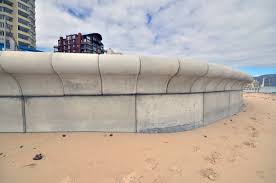Last Updated 2 months ago by Kenya Engineer
Steel’s vulnerability to corrosion is a significant challenge, especially in environments with high humidity, sea salt, high time of wetness and variable air temperatures. This susceptibility poses a serious threat to the longevity and structural integrity of critical infrastructure, including coastal rail networks, power supply pylons, and exposed structural steel. The degradation of steel in these applications can lead to catastrophic failures, requiring costly repairs and replacement. To combat this pervasive issue, engineers have come to rely on zinc coatings, which provide an exceptional and indispensable form of protection.
Zinc’s effectiveness as a sacrificial anode makes it the ideal material for galvanizing steel. When applied to steel, zinc acts as a barrier, physically separating the steel substrate from the corrosive elements in the environment. However, its most remarkable property is its ability to corrode preferentially. Because zinc is more electrochemically active than steel, it will corrode first, sacrificing itself to protect the underlying steel. This self-sacrificing action ensures that even if the coating is scratched or damaged, the exposed steel remains protected.
The primary method for applying zinc protective coatings is hot dip galvanizing, a process where steel is immersed in a bath of molten zinc. This process creates a metallurgical bond between the zinc and the steel, resulting in a highly durable and long-lasting coating. The resulting multiple alloy layers are harder than the base steel, providing excellent abrasion resistance. The durability of hot-dip galvanized coatings is unmatched, with a lifespan of several decades even in the most aggressive environments.
Coastal Rail Infrastructure
Coastal rail networks are particularly susceptible to corrosion due to their proximity to the sea. The salt-laden air and high humidity create a highly corrosive environment that rapidly deteriorates steel components. The constant exposure to salt spray, specifically in the form of chloride ions, accelerates the rusting process, leading to a breakdown of steel track components, signals, and other supporting structures. The failure of these components can lead to derailments, signal malfunctions, and significant disruptions to service.
Zinc coatings are essential for protecting the integrity of this infrastructure. Hot dip galvanizing is widely used on rail fasteners, signaling poles, overhead line structures, and bridge components. The robust nature of the zinc coating ensures these elements can withstand the relentless onslaught of the marine environment for decades. Without this protection, the maintenance costs and frequency of repairs would be prohibitively high, compromising the reliability and safety of the entire rail system. The use of zinc-coated steel extends the service life of these critical assets, reducing the need for premature replacement and minimizing operational downtime. The coating could be in the form of hot dip galvanized steel, inorganic zinc rich paints and even zinc thermal spray applied to the steel structures.
Atmospherically Exposed Power Supply Pylons
Power supply pylons are the backbone of an electrical grid, and their continuous exposure to the elements makes them highly vulnerable to corrosion. In coastal and industrial areas, the combination of high humidity and atmospheric pollutants—such as sulfur dioxide from industrial emissions—creates an acidic environment that accelerates the degradation of steel structures. The structural integrity of these towers is paramount, as a single failure can cause widespread power outages, impacting homes, businesses, and essential services.
Zinc coatings are the first line of defense for these vital structures. The steel components of power pylons, including the lattice frames, bolts, and cross-arms, are typically hot-dip galvanized. The galvanized coating provides a tough, uniform layer of protection that can withstand harsh environmental conditions. The self-sacrificing galvanic protection offered by the iron-zinc alloys ensures that any minor abrasions or cuts on the surface do not compromise the integrity of the steel. This durable coating significantly extends the life of the pylons, reducing the frequency of maintenance and inspection.
Exposed Structural Steel
Exposed structural steel in buildings, bridges, and other civil structures faces similar challenges. From pedestrian bridges to the framework of railway stations, the steel must be protected from the environment to ensure its long-term stability and safety. Corrosion of structural steel can lead to a loss of load-bearing capacity, compromising the entire structure. The cost of repairing or replacing a corroded steel bridge, for example, is immense and can cause significant traffic disruptions.
Galvanizing is a standard practice for protecting these structures. Structural beams, columns, and fasteners are hot dip galvanized to provide a robust, long-lasting protective barrier. The metallurgical bond formed during the galvanizing process provides exceptional durability and resistance to impact. This protection is critical for structures in diverse environments, from fog bound dry locations such as the West Coast of South Africa and Namibia to humid coastal urban centers such as Durban in SA. The longevity of the zinc coating minimizes the need for routine maintenance, such as painting and touch-ups, leading to substantial cost savings over the lifespan of the structure.
Galvanized Rebar in Concrete
While concrete is often considered a protective medium for steel rebar, it is not impervious to corrosive agents. Chloride ions, typically from sea spray in coastal regions, can penetrate the concrete and reach the rebar. Once chloride ions reach the steel, the chlorides break down the passive oxide layer that naturally forms on the rebar, initiating a corrosion process. This corrosion causes the steel to expand, leading to cracking and spalling of the surrounding concrete. This phenomenon, known as rebar corrosion, is a major cause of structural deterioration in bridges, parking garages, and marine structures.
A second initiator steel rebar corrosion in concrete is carbonation of the concrete matrix by means of carbon dioxide and the drop in concrete matrix pH. Below a pH of around 9.5 the steel rebar loses its passivation – that’s when zinc hot dip galvanizing comes into its own.
To mitigate this problem, engineers use galvanized rebar. The zinc coating on the rebar provides a dual layer of protection. First, it acts as a barrier, delaying the onset of chloride-induced corrosion. Second, if chloride ions do reach the steel, the zinc coating sacrificially corrodes to protect the underlying rebar. This sacrificial action dramatically extends the time before concrete spalling occurs, providing a much longer service life for the structure. The use of galvanized rebar is particularly critical in marine environments or where chloride containing sand may have been used in concrete thus ensuring the long-term durability and safety of concrete infrastructure.
Zinc coatings are an indispensable tool in the fight against steel corrosion in critical infrastructure. Their unique properties, including their barrier protection and sacrificial action, provide unparalleled defense for coastal rail networks, power supply pylons, exposed structural steel, and rebar in concrete. By extending the service life of these vital assets, zinc coatings reduce maintenance costs, enhance safety, and ensure the reliability of the systems that underpin our modern society.
Hot dip galvanizing of steel in these applications is a testament to its effectiveness and its essential role in building a resilient and sustainable infrastructure for the future.
South African coastal cities and towns need to adopt the use of hot dip galvanized steel in structures and galvanized rebar in concrete as a means to extended life infrastructure.

























